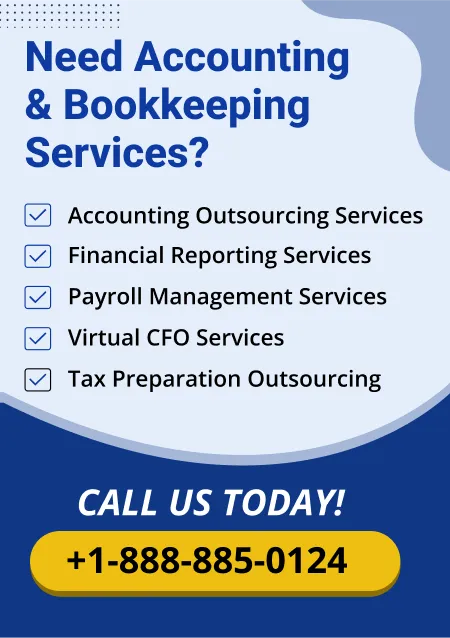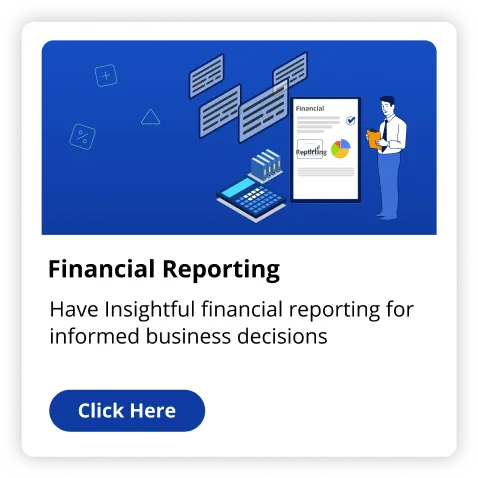Do you evaluate regularly how your business is performing? Like the majority of small business proprietors, you have most likely considered your expenses and revenue, but there is a great deal more to consider when determining your company's financial health. That is exactly where essential financial performance indicators (KPIs) enter into play. Using a service such as Accounting for Small Businesses will enable you to monitor and analyze these critical metrics so you are able to achieve success long term.
Why Financial KPIs Matter
Financial KPIs reveal to you your company's profitability, efficiency and financial stability. They aren't numbers; they are signs you should know about growth, investments or cost cutting. It is easier to interpret these metrics and apply them in your day operations when using Accounting for Small Businesses.
Key Financial KPIs to Track
Here are main KPIs to track:
1. Gross Profit Margin
This demonstrates how effectively your business is generating earnings from its core activities. It's based on dividing the cost of products sold (COGS) by the total sales. This metric shows your profit after taking out direct costs. A higher gross profit margin reflects a great pricing approach and cost management.
Why It Matters: Tracking your gross profit margin shows you when to adjust pricing or even decrease production expenses. You can monitor this KPI and make adjustments to boost profitability with Accounting for Small Businesses.
2. Net profit margin
Unlike gross Profit Margin, net Profit Margin includes all your expenses (overhead, taxes, interest). It can be based upon dividing net income by total revenue. This metric lets you know your business profitability.
Actionable Insight: In case your net profit margin is much lower than anticipated, you might reduce needless expenses or even produce revenue. Accounting for Small Businesses might show you where price reductions or profit increase can be achieved.
3. Current ratio
Your business can meet short-term obligations based on its current ratio. It's based on your current assets minus existing liabilities. A ratio in excess of one signifies you have enough assets to recoup your debts and a lower ratio indicates economic trouble.
Why This Matters: A healthy current ratio lets you continue with daily operations without going broke financially. You can monitor this particular metric in Accounting for Small Businesses and make changes to enhance cash flow whenever necessary.
4. Accounts Receivable Turnover Ratio
How fast does your company get payments from clients? An essential cash flow KPI will be the accounts receivable turnover ratio. It is computed from net credit sales divided by average accounts receivable. A greater ratio means you're collecting payments more efficiently.
What you should Watch For: A lower ratio could reflect issues collecting payments or loose credit policies. Strategies like tightening credit terms or even providing early payment discounts from Accounting for Small Businesses can improve this KPI.
5. Inventory Turnover Ratio
This KPI measures just how well you convert stock to product sales for businesses that manage inventory. Divide the price of items sold by the typical inventory value. A higher inventory turnover ratio reflects excellent inventory management, whereas a lower ratio might reflect overstocking or slow moving products.
Practical Advice: Effective inventory management can increase your profitability. With Accounting for Small Businesses, you can monitor inventory turnover and make data-driven choices like lowering surplus stock or even optimizing your product offerings.
6. Debt-to-Equity ratio
This shows just how much your small business owes versus its equity. It measures financial leverage, divided by total liabilities minus total equity. A high ratio implies your company is heavily influenced by borrowed money and might be risky.
Managing Financial Risk: You might have to reduce debt or even increase equity to bring down your debt-to-equity ratio. You can make use of Accounting for Small Businesses to pay off high interest loans or even draw in more capital.
7. ROA
This measures how well your business utilizes assets to generate profit. It is based upon dividing net income by all assets. A greater ROA signifies efficient asset utilization, along with a lower ROA might imply underutilized resources.
Efficiency Matters: Tracking ROA lets you know the way your investments in equipment or property are paying off. This particular KPI can be analyzed and your asset utilization evaluated with Accounting for Small Businesses.
How Accounting For Small Businesses Can Help
The manual entry of these KPIs can be overwhelming but Accounting for Small Businesses could assist with the tools and expertise making it manageable. They'll help you access financial dashboards with real time metrics to make informed choices fast. They may also provide tailored advice to enhance these KPIs and put your business on the path of success.
Read Also:- 20 Essential Budget Categories for Small Business Financial Planning
Final Thoughts
Not only large companies have to know and monitor financial KPIs; but even small businesses need to know this aspect of financial management. From gross profit margin to return on assets, these metrics offer you a good deal of information about your company. With Accounting for Small Businesses, you can comprehend these figures, determine growth opportunities and lower risks. Start monitoring these KPIs today to grow your business.
For expert accounting and financial support and guidance, consult The Fino Partners.



























